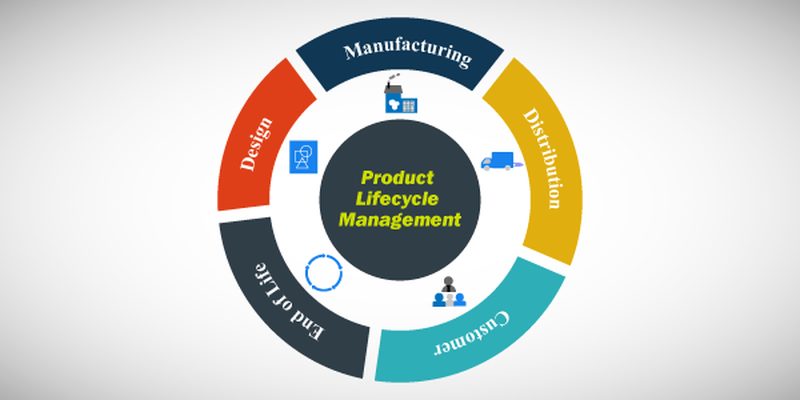Lifecycle management is a person’s ability to sell a product by using his idea and by following several steps to reach the target. We can say that management is more important than technology due to the fact it is the one that is determined to value how to manage technology for the further success of the project.
It is important to know that LCM (Lifecycle Management) is applicable in all types of business and its task is to make performance sustainable. LCM never stands in one place, it is constantly developing and improving, and the technology is upgrading.
Life Cycle thinking (LCT) differs from conventional business practices in which the focus was on costs and quality. LCT became a very useful tool in the sustainability of considering an impact of an outcome or service from the beginning to the end. LCT was noticed in the 1960s and ever since then developed as a sophisticated business method to consider not only environmental but also social influences.

For any type of production process, it is necessary to go through several stages. Production starts with an initial idea. Then, you’ll have to figure out design and manufacturing and determine which service and support resources to use. It’s also important to consider the end of life and disposal phases, which can give you the tools you need to start the production process on a new service or product.
Product and application lifecycle management involves integrating your business processes, data, and staff members to produce quality items and services. Setting up a production system gives you a wealth of information that can help you streamline future production efforts.
Here are a few things you should know about application lifecycle management.
ALM (Application Lifecycle Management) covers the entire cycle from the idea of conception over developing and testing. We can say it is an umbrella term and it covers several disciplines that are considered to be separated, but also including project and requirements management, development, and testing. ALM can be used to improve the efficiency of software development.
PLM (product lifecycle management) is a successful business strategy developed by business management and the final task is to sell the final product. It goes through several phases, from creation through the usage and finally to disposal. Over the last decade, many manufacturers and machinery industries discovered the benefits of PLM and started to adopt PLM software.
The goals of PLM are improving the quality of the outcome, identifying potential buyers, and finally reducing environmental impact. To be successful, the company has to understand their buyers, market, and competitors as well. We can say that PLM integrates people, data, and business systems through the process.
Lifecycle Management Phases

When it comes to application lifecycle management, it is important to make sure you completed each phase of the process. The lifecycle phases are conception, design, realization, and services.
During the conception phase, you determine the requirements for your product based on your company’s needs, customer’s demands, regulatory needs, and research results. This is the first step and perhaps the most difficult one. It will probably take more time than any other phase, but after the plan is made, every other step will be easier than previous. It is very important not to think only about the company’s needs, but also the customer’s needs about the final product.
Your product will start to take shape during the design phase. This is usually done in various programs such as CAD, a trial model is being made. If it fulfills all requests it is ready for further procedure. The good thing is that it is possible to get back to this stage if some changes in design are required.
After designing, you’ll go through the realization phase, which is the process of bringing your product to production. During realization, you’ll need to study your production line layout and have your products tested and inspected.
At the final phase, the “service” part of the process, you’ll gather information from the support and maintenance of your product and service. This is necessary for delivering a quality product to customers and having the in-house information you need to keep your product functioning at its best. During the service phase, you should also come up with regulations for recycling or safe disposal. This is especially important if your company is committed to being environmentally friendly.
According to betanews.com, lifecycle management can be deconstructed into these important phases but it’s important not to utilize these lifecycle management steps in isolation. All the steps in the management process have to work together so you can effectively track and manage your product.
Lifecycle Management Approach
It is a very effective and integrated approach to business management based on the principles of life cycle thinking (LCT) to help all kinds of businesses (manufacturers, retailers). It has been developed, refined, and improved in the last 30 years.
Benefits of Lifecycle Management

Application and product lifecycle management can offer several benefits to your company. These benefits include shorter production time which helps you get your items to the market faster. You can also utilize lifecycle management to improve the reliability of your items and the quality of your products.
When you start the product creation phase, you can use the lifecycle management process to estimate costs and find ways to reduce production costs. This form of management can be used as a template for product optimization to cut material costs and reduce production waste. Once the process is complete, you may see accurate quote production and more sales opportunities. Lifecycle management can also help you manage product demand based on the season.
It’s also important to note that product lifecycle management is a lucrative business. Recent research concerning the global market for lifecycle management software predicts that it will soon be worth nearly $76 billion by the year 2024. This is likely why you and your company should take advantage of this management tool to increase productivity and profits.



